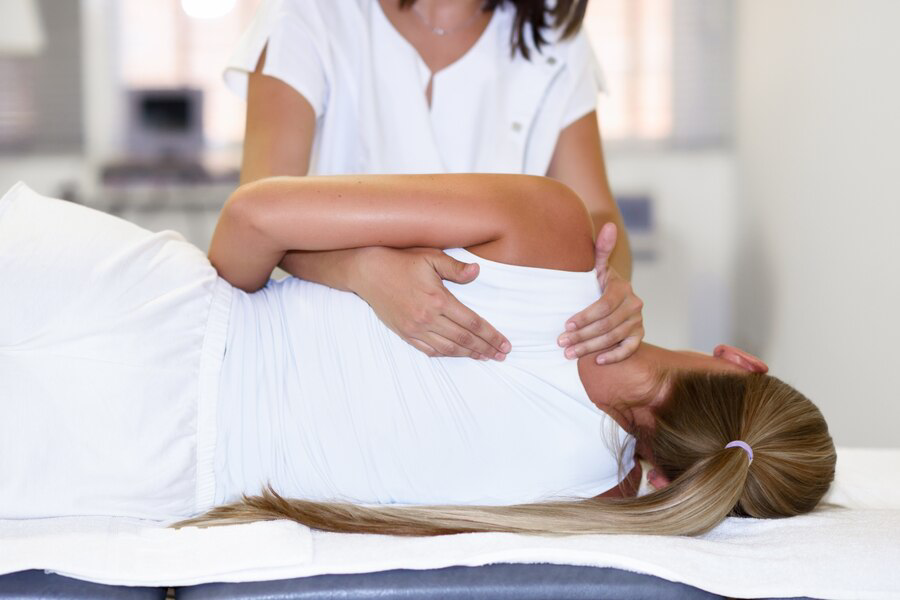After a chiropractic adjustment, it is not uncommon to experience mild soreness, which can be attributed to various factors inherent in the treatment process. The intricate manipulation of muscles, ligaments, and the spine during chiropractic sessions may cause temporary discomfort, akin to the aftermath of a vigorous workout.
Thank you for reading this post, don't forget to subscribe!Additionally, the repositioning of the spine and the release of toxins from the body’s tissues can contribute to this post-adjustment soreness. While this sensation is generally short-lived and part of the body’s natural response to the adjustments, it raises questions for individuals exploring chiropractic care.
Understanding that this soreness is often a transient aspect of the healing process allows patients to make informed decisions and communicate effectively with their chiropractors. Ultimately, the journey to optimal musculoskeletal health may involve temporary discomfort, emphasizing the importance of personalized care and open communication with experienced chiropractors in Overland Park.
Understanding Chiropractic Adjustments

Chiropractic adjustments, a cornerstone of chiropractic care, entail the application of controlled force to specific joints, especially the spine, addressing misalignments and imbalances. The objective is to improve joint function, alleviate pain, and stimulate the body’s innate healing capacities. Whether employing their hands or specialized tools, chiropractors administer precise and targeted adjustments tailored to each individual’s needs.
While chiropractic care is generally lauded for its safety and effectiveness, it’s vital to acknowledge the inherent variability in individual reactions to treatment.
Each person’s body responds uniquely, emphasizing the importance of understanding potential causes of post-adjustment soreness. This awareness empowers individuals to make informed decisions about their healthcare, fostering a proactive approach to managing expectations and optimizing the benefits of chiropractic interventions.
Causes of Post-Chiropractic Soreness
- Muscle and Ligament Adjustments
Chiropractic adjustments often involve manipulating muscles and ligaments around the spine. The sudden movement or stretching of these tissues can lead to mild soreness, similar to what one might experience after engaging in a new or intense workout. This type of soreness typically resolves within a day or two.
- Repositioning of the Spine
The spine may be gently repositioned during a chiropractic adjustment, which can temporarily affect the surrounding tissues. As the body adapts to its corrected alignment, some individuals may experience soreness as the muscles and ligaments adjust to the new position.
- Release of Toxins
Chiropractic adjustments can stimulate the release of toxins stored in the body, particularly if there were areas of restricted blood flow or nerve function. The body’s natural detoxification processes may contribute to soreness as it eliminates these waste products.
- Initial Discomfort for Long-Term Gain
In some cases, initial discomfort or soreness is a part of the healing process. As the body undergoes positive changes and begins to heal, it is not uncommon to experience temporary discomfort on the journey to long-term relief.
Addressing Concerns with Your Chiropractor
If soreness persists or becomes severe, it is essential to communicate openly with your chiropractor. They can provide insights into the specific adjustments made during your session, offer recommendations for at-home care, and address any concerns you may have. Chiropractors are trained to tailor their approach to each individual’s unique needs, and open communication is crucial for optimizing the benefits of chiropractic care.
Tips for Managing Post-Chiropractic Soreness
After a chiropractic adjustment, some individuals may experience mild soreness, but there are practical and proactive steps to manage and alleviate this discomfort. Incorporating the following tips into your post-chiropractic care routine can contribute to a smoother recovery process:
- Stay Hydrated
Adequate hydration is a fundamental aspect of overall health and is particularly crucial after a chiropractic adjustment. Drinking plenty of water supports the body’s natural healing processes by helping to flush out toxins that may be released during the adjustment. Proper hydration aids in maintaining optimal circulation and ensuring that the body efficiently carries away waste products, contributing to a faster recovery.

- Gentle Stretching
Engaging in gentle stretching exercises is a beneficial practice for managing post-chiropractic soreness. These stretches, especially those recommended by your chiropractor, can help alleviate muscle tension and promote flexibility. Stretching encourages blood flow to the affected areas, facilitating the healing process and reducing the likelihood of stiffness. Incorporating these stretches into your daily routine can be an essential part of maintaining overall musculoskeletal health.
- Heat or Cold Therapy
Applying heat or cold packs to sore areas can be an effective way to manage discomfort and promote recovery. Heat therapy helps to increase blood flow, relax muscles, and soothe stiffness, while cold therapy reduces inflammation and numbs the area, providing a numbing effect on pain. Alternating between heat and cold packs or following your chiropractor’s specific recommendations can offer relief and contribute to a more comfortable post-adjustment experience.
- Rest and Relaxation
Allowing your body sufficient time to rest and recover is paramount after a chiropractic adjustment. While light physical activities, such as walking, are generally encouraged, it is essential to avoid strenuous exercises that may exacerbate soreness. Prioritizing adequate sleep is equally crucial, as the body undergoes significant healing during restorative sleep cycles. Creating a calm and relaxing environment can enhance the body’s ability to recover, promoting overall well-being.
- Communication with Your Chiropractor
Open and ongoing communication with your chiropractor is key to ensuring that your post-adjustment experience is optimized for your well-being. If soreness persists or raises concerns, consulting with your chiropractor allows for a personalized assessment of your condition. They can provide additional guidance, address any questions or concerns, and make any necessary adjustments to your treatment plan to enhance its effectiveness.
Conclusion
In conclusion, experiencing mild soreness after a visit to a chiropractor in Overland Park is a normal part of the healing process. By incorporating these practical tips into your post-chiropractic care routine, you can actively participate in your recovery and minimize discomfort.
Remember that every individual responds differently to chiropractic adjustments, and it’s crucial to listen to your body. Consistent self-care, communication with your chiropractor, and a proactive approach to managing post-adjustment soreness contribute to a positive and beneficial chiropractic experience, ultimately supporting your journey toward improved musculoskeletal health.


Recent Comments